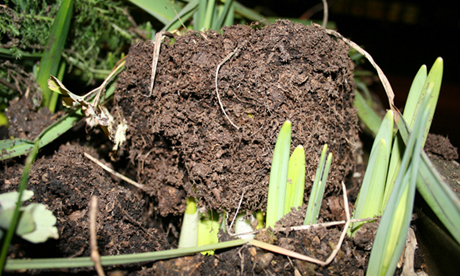Going native

Bluebells tossing out the aquilegia. Photo: © Peter Jones
It started with the seed catalogues. They were bothering me with multiple copies on a weekly basis, all of them garish and none of them much use.
There was something bizarre about the plants they offered, blue fuchsias and blue busy lizzies, a freakish parade of flowers that you know are wrong, red rudbeckias, echinaceas in “every colour imaginable”, a six-foot petunia, or one that flowers in different colours on the same stem – like a human being with two heads.
I picked out some reasonably normal looking poppies and a packet of flax, but searched in vain for anything that hadn’t been “improved”. I felt like a slightly health-obsessed vegan, scouring the kebab shops of the Kingsland Road for succour. It was like doing something you didn’t have to do.
Why would you want something “selected for uniformity and simultaneous flowering”? It’s the very opposite of why you garden. The garden is the one place where you get something genuinely unexpected, magical.
There’s nothing more wonderful than when a plant you had forgotten pokes through, or a seed you had given up on suddenly sprouts. To introduce uniformity, reliability even, is to miss the point entirely.
Bedding plants are fine when they’re done with a huge helping of irony, or in, say, Bournemouth, but in any normal garden they scream where they should sing.
The second thing was the aquilegia. I had planted it too close to some rather thuggish Spanish bluebells, which not being native had smothered it the previous spring. It limped through the summer, sending out a few leaves and had just about got through the cold snap when one morning I walked out to find it lifted clear of the soil.
Beneath its rapidly desiccating rootball was a large clump of bluebells arrived from some other, subterranean place, their stalks still yellow from the dark.
So as an antidote to all this bullying, colorific and otherwise I’ve decided to tone down the palette and go native. I’ve replaced the indigestible mix of “tutti frutti”, “raspberry sorbet” and “chocamocha” with selfheal (Prunella vulgaris), yellow toadflax (Linaria vulgaris) and clustered bellflower (Campanula glomerata).
I am not assured of success, but at least there will be a totally natural palette, a few failures and random flowering.
